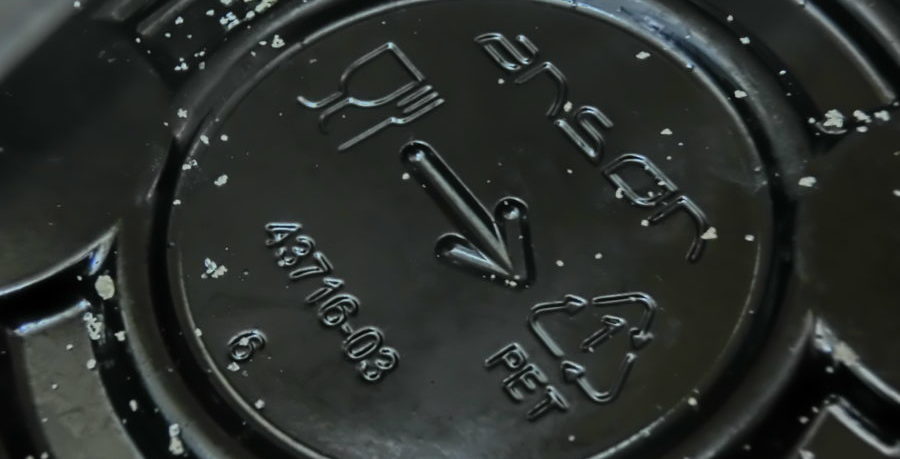
More plastic products are being produced today than at any other point in time. Chances are you have noticed the numbers on the bottom of plastic products surrounded by 3 arrows that form a triangle. The plastic numbers range from 1 to 7 and are called the Resin Identification Code. Each number indicates which type of resin the plastic product is made of. If you have any interest in plastics recycling, or would like to cut down on using more harmful plastics, getting to know the meaning behind the plastic numbers is a good idea. Polypro buys bulk plastic products belonging to most of the major plastic types.
Understanding All 7 Plastic Numbers
Plastic products are designed for a variety of different means and contain different chemicals depending on their use. Knowing what chemicals are potentially harmful can help you avoid purchasing certain plastic products. The plastic numbers break down the general types of plastic you will come across.
Plastic #1 – Polyethylene Terephthalate (PET/PETE)
This plastic is generally found in bottles containing water, soft drinks, juice, sports drinks, as well as containers for condiments like ketchup and salad dressings. As these are food products and are commonly available for consumers, PET is relatively safe. It can, on occasion, leach a metal called antimony which is used during manufacturing. Bottles that are left to sit longer will tend to contain higher amounts of antimony, especially if left in sunlight or exposed to high temperatures.
Plastic #2 – High Density Polyethylene (HDPE/PE-HD)
This is the most heavily recycled type of plastic and is commonly found in milk or water jugs, juice bottles, as well as shampoo and cleaning supply bottles. It is also used for plastic grocery bags and the bag inside cereal boxes. HDPE has been found to release estrogenic chemicals but is still one of the most low-hazard plastics.
Plastic #3 – Polyvinyl Chloride (PVC/V)
PVC plastic can be used in products that are rigid or flexible, so it has many applications. It is commonly found in bags for bedding, deli and meat wrap, shrink wrap, plastic toys, and table cloths. PVC contains toxic chemicals including DEHP which is a type of phthalate that is used to soften plastic. Products made using PVC are generally not recyclable: only about 1% of all products end up being recycled.
Plastic #4 – Low-Density Polyethylene (LDPE/PE-LD)
LDPE is commonly found in shrink wraps, squeezable bottles, dry cleaner garment bags, and the bags used to package bread. Some plastic bags found in stores are made with this type of plastic as well. It can also be found in some clothing and furniture. LDPE is considered one of the safest plastics. In the past it has seen low recycling numbers, but many recycling centers are moving towards allowing this plastic as it can be reused.
Plastic #5 – Polypropylene (PP)
PP is a tough and lightweight plastic that has high heat resistance compared to other plastics. It acts as a barrier against moisture, grease and chemicals. PP is commonly used in disposable diapers for this reason. It is used in most potato chip bags to keep them fresh. PP is recyclable, but only about 3% of PP products get recycled in the United States. It is considered safe for reuse and is often repurposed into battery cases, brooms, bins, and trays.
Plastic #6 – Polystyrene (PS)
PS is an inexpensive and easily-formed plastic with a variety of applications. It is most often found in styrofoam cups, food containers, egg cartons, and the “peanut” foam chips that are found in shipping boxes. Due to its lightweight nature, it tends to break apart easily and disperse throughout the environment. PS is typically not recycled and most curbside collectors will not take it. Most of this plastic ends up in landfills. If possible, PS should generally be avoided in favor of reusable plastics that are less environmentally hazardous.
Plastic #7 – Other (BPA, Polycarbonate and LEXAN)
This category is all-encompassing but mainly considers Polycarbonate (PC). Because many plastics fall in this category, there is no standardized protocol for this number when it comes to recycling. Many number 7 plastics tend to contain concerning chemicals that can leach into the product. It is best to avoid using number 7 products when possible for safety reasons and also because they cannot be recycled.
The plastics industry is required to include the plastic numbers on consumer products in light of regulations but individuals need to understand the codes to get a leg up. Learning these classifications is simple and will help you use plastics to your advantage while lessening the negative impact on our environment.
Contact Us
If you have a business that has large amounts of plastic waste and would like to help by recycling it, contact Polypro Recycling today to set up a consultation.